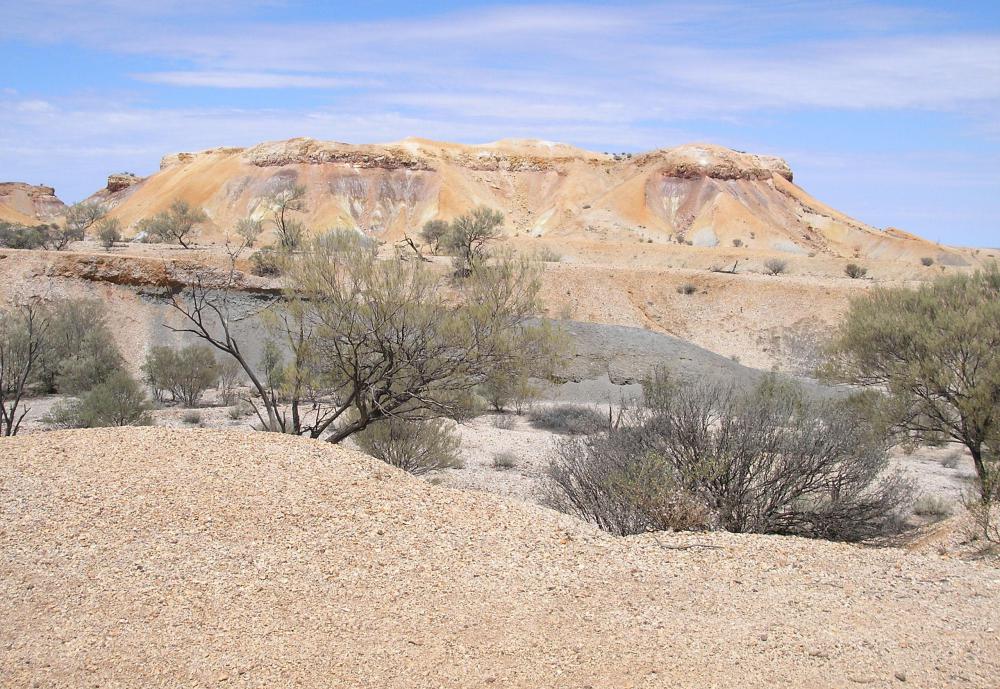At WiseGEEK, we're committed to delivering accurate, trustworthy information. Our expert-authored content is rigorously fact-checked and sourced from credible authorities. Discover how we uphold the highest standards in providing you with reliable knowledge.
What is Dry Farming?
Dry farming refers to methods used to farm in semi-arid terrains with an average annual rainfall of less than about 20 inches (51 cm). Dry farming methods began in the 1800s in the United States. Farmers across the U.S. focused on harvesting non-irrigated, drought-resistant crops. In other words, crops relied only on what rainfall they received.
Farmers mastered the craft of preventing evaporation and runoff to get the most out of rain water, using techniques that maximized the soil's ability to hold in moisture. Wheat was the biggest crop to thrive well, but corn, oats and other crops were also able to grow under dry conditions. By the 20th century, dry agriculture received widespread adoption and popularity, spurred on by the 1907 publication of Hardy Webster Campbell's Soil Culture Manual: A Complete Guide to Scientific Agriculture as Adapted to the Semi-Arid Regions. Although Americans invented dry farming for themselves during the 19th century, there is evidence to suggest that it may have been practiced long before by Native Americans.

H.W. Campbell didn't just write a famous book detailing the art of semi-arid agriculture — he himself helped create the methods and machinery behind dry farming. Hardy invented what is known as a subsoil packer in 1890, a piece of machinery that helped create a firm seed bed of soil that would retain the most moisture. Other machinery and techniques also helped create seed beds that allowed certain crops to grow in some of the driest conditions.

Farmers learned to plant seeds deeper; the surface soil was often too dry to allow seeds to germinate, but the soil underneath could retain moisture. Contour farming used the elevation contour lines of a field to better direct rainfall into seedbeds and prevent wasteful runoff. Farmers also learned how to tend soil to keep it loose, thereby increasing its ability to soak up moisture. With the right dry farming methods, even California vineyards were able to thrive and turn out respectable amounts of wine.

Dry farming was aided in large part by the federal government, which in 1905 created the Office of Dry Land Agriculture, an extension of the larger Department of Agriculture. Farmers on the Great Plains became very successful at semi-arid farming. Before long, the region was one of the largest producers of wheat in the world.
Overuse of dry farming had a dark side, however. By the 1930s, dry farmers had ravaged much of the topsoil without giving it enough time to replenish. Grass that normally held the topsoil in place no longer rooted the soil down in many parts of the Midwest. As a result, severe drought conditions in the 1930s, coupled with heavy winds, culminated in the Dust Bowl. During the Dust Bowl, loose and dry topsoil was picked up by wind and blown into the atmosphere in such quantities as to blot out the sky with ominous black clouds. Those dust clouds were known to sweep through towns with enough mass and force to bury sitting cars. Eventually, American farmers corrected the excesses of dry farming to ensure a Dust Bowl never happened again.

Dry farming is still used today, and helps many crops thrive throughout the world. Other similar farming and garden-growing techniques have also become popular. Xeriscaping, for example, relies on a minimalist approach to irrigation, growing crops and gardens that rely on the most conservative use of water. Many urban garden growers have adopted xeriscaping as an eco-conscious method of landscaping.
AS FEATURED ON:
AS FEATURED ON:















Discussion Comments
Winter wheat, which is also a good crop to keep the wind from blowing up dust from fields, is one of the most popular dry farming crops.
You might be surprised to know that watermelons are also a popular dry farming crop in some areas. The name watermelon doesn't lead you to think it would be a good choice for dry farming, but names can be misleading.
I'm not an expert, but I do know that dry farming takes more knowledge and more skill than farming in which irrigation is available. It's easy enough to determine which dry farming crops you should plant by looking at what crops have fared well in the past, but some of the other parts of the process are more difficult.
Anticipating how much rainfall is going to be absorbed and how much will evaporate without benefiting the crops is a lot more complicated than choosing which crops to grow. However, dry farmed products are considered to be more nutritious and sometimes are priced higher when they are sold. So, I guess the extra work and planning might prove worthwhile in the end.
Dry farming is a common practice with grapes used to produce wine in may parts of the world. Actually, wine grapes are often grown in regions where the vines are more likely to receive too much rain rather than not enough, so lack of water is not a major concern.
In wine producing regions that receive less rainfall, dry farming techniques are a necessity because irrigation and watering of crops is against the law.
Post your comments